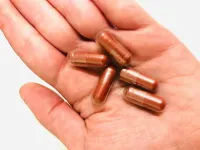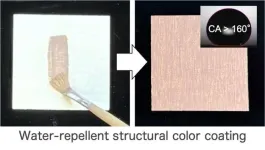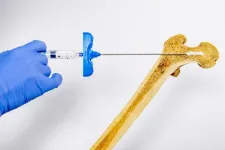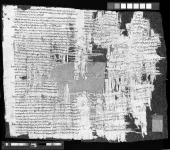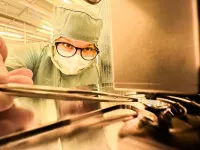(Press-News.org) SEATTLE — Jan. 28, 2025 — A new study shows that oral fecal microbiota transplantation (FMT) is a feasible and safe addition to preventing graft-versus-host disease in patients undergoing stem cell transplantation for blood cancers.
The study, published Jan. 25 in Nature Communications, is part of a phase 2 clinical trial led by clinicians at Fred Hutch Cancer Center. The study builds on earlier research of the role of the gut microbiome in helping patients recover after stem cell transplantation.
“The gut microbiome is an organ in itself, and it is connected to the immune system,” said lead author Armin Rashidi, MD, PhD, a medical oncologist at Fred Hutch. “Since the process of stem cell transplantation damages the gut microbiome, we want to see if FMT will help restore microbial diversity and promote the beneficial bacterial species that support a healthy immune system.”
The study included 20 patients who underwent allogeneic stem cell transplantations for various blood disorders including blood cancers. They then received FMT via oral capsules taken three times a day for seven days. The capsules contained a purified community of microbes derived from stool samples from three healthy donors.
The capsules were manufactured by the University of Minnesota Microbiota Therapeutics Program in accordance with the FDA-approved investigational protocols and strict pharmaceutical standards.
“Although the capsules were originally developed for treatment of recurrent Clostridioides difficile infection, they are now being investigated for a multitude of different indications,” said Alexander Khoruts, MD, coauthor of the paper and a gastroenterologist at the University of Minnesota Medical School. “Unlike treatment of C. difficile, most indications require optimized formulations of gut microbes. The Fred Hutch trial illustrates this next phase in the development of donor-derived microbial therapeutics.”
Key Findings:
Donor Differences Matter: The trial analyzed three different FMT donors and found notable differences in how well each one established itself in the recipient. Donor 3 emerged as the most effective, achieving a 67% microbiota engraftment rate. This means of all the microbes after FMT whose origin could be determined with certainty, 67% came from the donor and the remaining were from the patient. This “winning” donor was characterized by high levels of Bifidobacterium adolescentis, a beneficial microbe.
Microbiota Diversity Influences Success: Consistent with prior research, the study found that lower pre-FMT microbiota diversity in patients was associated with better donor microbiota engraftment. This suggests that less diverse pre-FMT gut environments may make it easier for transplanted microbes to establish themselves.
FMT is Safe: FMT was shown to be safe even in highly immunocompromised patients. The transfer of millions of live microbes to the patient did not cause any infections, likely because they were “healthy” microbes from a healthy donor. Engraftment reached 100% for some microbial species known to support overall gut health and protect against graft-versus-host disease.
“Our study shows that when done following proper regulation in a clinical trial, FMT is safe,” Rashidi said. “There had been concerns of giving live microbes to people who are immunocompromised, but this study and our 2023 study before it show no major toxicity, which should be reassuring to patients and their families.”
The Nature Communications paper reports on the clinical trial’s "run-in" period, a preparation phase to find the best of three stool donors to be used for the larger randomized trial which is now actively enrolling patients.
The randomized phase 2 clinical trial, led by Rashidi, will study whether FMT improves health outcomes for patients undergoing allogeneic stem cell transplantation, such as less acute GVHD, fewer hospitalizations, fewer infections, better quality of life and longer survival. The trial will include 126 patients randomly assigned to either FMT from the “winning” donor identified from the Nature Communications study or to a placebo group. The trial site is at Fred Hutch in Seattle.
“The hope of using FMT with people receiving stem cell transplants is that FMT will help prevent acute GVHD without adding more immunosuppression, improve quality of life, and decrease mortality after transplant,” Rashidi said. “Our findings published in Nature Communications give another evidence-based example of how the gut microbiome can be used to improve human health.”
Other clinical trials investigating FMT focus on treatments for autism, colitis, inflammatory bowel disease, and irritable bowel syndrome. In 2023, the U.S. FDA approved oral FMT to treat an infectious form of diarrhea.
The study was funded by the Leukemia & Lymphoma Society and the National Institutes of Health’s award to the Fred Hutch/University of Washington/Seattle Children’s Cancer Consortium. Manufacturing of the FMT product and placebo was partially supported by Achieving Cures Together, a nonprofit organization.
###
Note: To the extent any commercializable discoveries result from the aforementioned research, Fred Hutch and the scientists who contributed to the discoveries may stand to benefit from their future commercialization.
The clinical trials referenced above involve investigational products and/or therapies that have not been approved for commercial marketing by the U.S. Food and Drug Administration or any other regulatory authority. Results may vary and encouraging results from early-stage clinical trials may not be supported in later-stage clinical trials. No conclusions should be drawn from the information in this Tip Sheet or from the conference presentations about the safety, efficacy or likelihood of regulatory approval of these investigational products and/or therapies.
Fred Hutch does not endorse or verify the accuracy of any content of any third party sites, materials or related information that may be referenced by the presentations.
###
Media contact:
Molly McElroy
mwmcelro@fredhutch.org
Fred Hutch Cancer Center unites individualized care and advanced research to provide the latest cancer treatment options while accelerating discoveries that prevent, treat and cure cancer and infectious diseases worldwide.
Based in Seattle, Fred Hutch is an independent, nonprofit organization and the only National Cancer Institute-designated cancer center in Washington. We have earned a global reputation for our track record of discoveries in cancer, infectious disease and basic research, including important advances in bone marrow transplantation, immunotherapy, HIV/AIDS prevention and COVID-19 vaccines. Fred Hutch operates eight clinical care sites that provide medical oncology, infusion, radiation, proton therapy and related services. Fred Hutch also serves as UW Medicine’s cancer program.
END
Could fecal microbiota transplantation help patients heal after stem cell transplantation?
Phase 2 clinical trial shows a safe dose from a specific donor helped with gut microbiome recovery in people with cancer
2025-01-28
ELSE PRESS RELEASES FROM THIS DATE:
Structural color shields: water repellent coatings
2025-01-28
Ever wondered about the brilliant blue hues of peacock feathers or the shimmering metallic chitin on beetles? These natural wonders are examples of structural colors—a phenomenon in which microscopic structures create vibrant, lasting hues. Inspired by these marvels, a research team from Japan has been exploring structural colors. Their earlier work realized that the preparation of structural color materials from melanin particles mimics the coloration mechanism of peacock feathers. Building on this foundation, the team set out to develop a coating material that captures ...
Researchers enhance wildlife studies with novel prey measurement technique using animal-borne cameras
2025-01-28
A team of international scientists, led by researchers from the University of Otago, has introduced a groundbreaking method to improve the accuracy of prey size estimation using footage captured by animal-borne cameras. This innovative approach, published in PeerJ Life and Environment, enhances our understanding of predator-prey interactions in natural habitats by refining a critical tool for ecological research.
Animal-borne cameras, such as the "PenguCams" used in this study, allow ...
An injectable hydrogel for local bone densification
2025-01-28
Osteoporosis is a disease in which bone resorbs faster than it is formed, gradually weakening its structure over time and leading to fractures. Although the condition is well recognized, Dominique Pioletti, head of the Laboratory of Biomechanical Orthopedics in EPFL’s School of Engineering, emphasizes that the economic and societal impacts of osteoporosis fractures are often underestimated.
“In the absence of effective preventive measures, around 40% of women aged 50 will suffer at least one major osteoporotic fracture; in ...
Forgery and fiscal fraud: a new papyrus from Israel reveals a spectacular criminal case from the Roman empire
2025-01-28
Scholars from the Austrian Academy of Sciences, the University of Vienna and the Hebrew University of Jerusalem unveil a unique papyrus from the collections held by the Israel Antiquities Authority, offering rare insights into Roman legal proceedings and life in the Roman Near East. In a new publication in the international scholarly journal Tyche, the research team reveals how the Roman imperial state dealt with financial crimes – specifically, tax fraud involving slaves – in the Roman provinces of Iudaea and Arabia. The new papyrus furnishes a strikingly direct view of Roman jurisdiction and legal practice, as well as important new information ...
A super-Earth laboratory for searching life elsewhere in the Universe
2025-01-28
Thirty years after the discovery of the first exoplanet, we detected more than 7000 of them in our Galaxy. But there are still billions
more to be discovered! At the same time, exoplanetologists have begun to take an interest in their characteristics, with the aim of finding life elsewhere in the Universe. This is the background to the discovery of super-Earth HD 20794 d by an international team including the University of Geneva (UNIGE) and the NCCR PlanetS. The new planet lies in an eccentric orbit, so that it oscillates in and out of its ...
Testing the effect of thousands of compounds on cellular metabolism
2025-01-28
Researchers at the University of Basel are able to test in parallel the effects of over 1500 active substances on cell metabolism. Their analysis also led to the discovery of previously unknown mechanisms for known medications. This approach might help scientists to better predict side effects and find additional uses for commercially available pharmaceuticals.
How do active substances alter metabolic processes in cells? Answering that question would provide valuable clues for the development of new medications. ...
Follow the water: Searching for a lunar oasis
2025-01-28
As humankind imagines living off-planet — on the moon, Mars and beyond — the question of how to sustain life revolves around the physical necessities of oxygen, food and water. We know there is water on the moon, but how do we find it? Is it in the craters? The shadowed regions? The poles? Knowing where to look gives astronauts the best chance at successfully living on the moon, something that has, heretofore, remained the stuff of science fiction.
Researchers from the University of California ...
Ocean-surface warming four times faster now than late-1980s
2025-01-28
The rate of ocean warming has more than quadrupled over the past four decades, a new study has shown.
Ocean temperatures were rising at about 0.06 degrees Celsius per decade in the late 1980s, but are now increasing at 0.27 degrees Celsius per decade.
Published today (Tuesday, 28 January 2025) in Environmental Research Letters, the study helps explain why 2023 and early 2024 saw unprecedented ocean temperatures.
Professor Chris Merchant, lead author at the University of Reading, said: “If the oceans were a bathtub of water, then in the 1980s, the hot tap was running slowly, warming up ...
Study explores whether dietary supplement could provide first effective treatment for cirrhosis
2025-01-28
A dietary supplement used to build muscle – or prevent muscle loss as a result of ageing or illness – is to be trialled as a potential treatment for chronic liver disease.
Β-hydroxy β-methylbutyrate, otherwise known as HMB, is used predominantly to build muscle bulk and function but previous studies have demonstrated it can have clinical applications.
In a new study, scientists and clinicians will test its potential to benefit some of the 60,000 people in the UK who have been diagnosed with cirrhosis, a condition that results from scarring to the liver.
In the UK, cirrhosis is most commonly caused by harmful alcohol use or fatty liver disease. In severe cases, those ...
Individual cells can be connected to plastic electrodes
2025-01-28
Researchers at Linköping University have succeeded in creating a close connection between individual cells and organic electronics. The study, published in Science Advances, lays the foundation for future treatment of neurological and other diseases with very high precision.
“We could target individual cells and explore how this affected their ability to stay healthy and functional,” says Chiara Musumeci, researcher at the Laboratory of Organic Electronics, LOE, at Linköping University.
The brain is controlled by electrical signals that are converted into chemical substances in the communication between the brain ...
LAST 30 PRESS RELEASES:
NTP-enhanced lattice oxygen activation in Ce-Co catalysts for low-temperature soot combustion
Synergistic interface engineering in Cu-Zn-Ce catalysts for efficient CO2 hydrogenation to methanol
COVID-19 leaves a lasting mark on the human brain
Scientists use ultrasound to soften and treat cancer tumors without damaging healthy tissue
Community swimming program for Black youth boosts skills, sense of belonging, study finds
Specific depressive symptoms in midlife linked to increased dementia risk
An ‘illuminating’ design sheds light on cholesterol
Who is more likely to get long COVID?
Study showcases resilience and rapid growth of “living rocks”
Naval Research Lab diver earns Office of Naval Research 2025 Sailor of the Year
New Mayo-led study establishes practical definition for rapidly progressive dementia
Fossil fuel industry’s “climate false solutions” reinforce its power and aggravate environmental injustice
Researchers reveal bias in a widely used measure of algorithm performance
Alcohol causes cancer. A study from IOCB Prague confirms damage to DNA and shows how cells defend against it
Hidden viruses in wastewater treatment may shape public health risks, study finds
Unlock the power of nature: how biomass can transform climate mitigation
Biochar reshapes hidden soil microbes that capture carbon dioxide in farmland
Reducing saturated fat intake shows mortality benefit, but only in high-risk individuals
Manta rays create mobile ecosystems, study finds
Study: Mixed results in using lipoic acid to treat progressive multiple sclerosis
Norbert Holtkamp appointed director of Fermi National Accelerator Laboratory
New agentic AI platform accelerates advanced optics design
Biologists discover neurons use physical signals — not electricity — to stabilize communication
Researchers discover that a hormone can access the brain by hitchhiking
University of Oklahoma researcher awarded funding to pursue AI-powered material design
Exploring how the visual system recovers following injury
Support for parents with infants at pediatric check-ups leads to better reading and math skills in elementary school
Kids’ behavioral health is a growing share of family health costs
Day & night: Cancer disrupts the brain’s natural rhythm
COVID-19 vaccination significantly reduces risk to pregnant women and baby
[Press-News.org] Could fecal microbiota transplantation help patients heal after stem cell transplantation?Phase 2 clinical trial shows a safe dose from a specific donor helped with gut microbiome recovery in people with cancer
